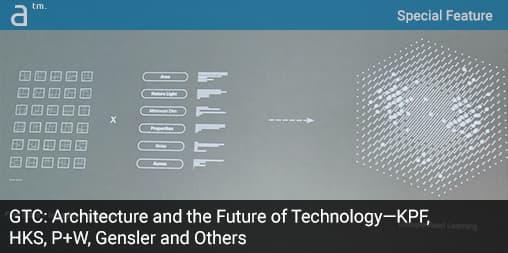Continued from page 3
Four Years of GPU Accelerated VDI for AEC
This panel explored pipeline decisions of a smaller firm Browning Day Mullin Dierfort (BDMD)—an architecture, planning, landscape and interior design firm in the Midwest—and how they use VDI on a smaller scale than CannonDesign.
VDI for Smaller Firms
Their decision process has different needs. Jeremy Stroebel discussed how to make a cost-efficient case study with use of AutoCAD, Revit, and SketchUp alongside the XenDesktop environment. He said that VMWare and Citrix were about the same as they both give updates on a regular basis so using either was fine for their needs.
The decisions for their pipeline were based on “design decisions” including Desktop vs. Applications, Persistent vs. Non-Presistant, Hypervisor (XenServer vs. VMWare ESXi) and Broker (XenDesktop vs. Horizon).He states you must understand your environment including, what are your applications, “desktop set-ups” (Dual Monitors or anything unique), and assessment (Lakeside Systrack, Liquidware Stratusphere UX).
BDMD only does 2D CAD with AutoCAD, a single threaded app with moderate GPU usage; NVIDIA recommended 1GB GPU, moderate RAM (8GB is required), and a server-side cursor is very important for UX. Revit is a single threaded app, predominantly, with the exception of rendering; lower GPU utilization (generally) using DirectX (not Open GL), larger RAM requirements for larger models. Sketchup is a single threaded app that is now 64 bit and can use more RAM. It is very GPU dependent for good UX; high RAM requirements for large models and shadows. It uses Open GL.
Closing Commentary
This third and final feature from the 2018 NVIDIA GTC (GPU Technology Conference) summarizes a range of superb architecture industry presentations and panels. Earlier we published a feature focused on the broad view behind the NVIDIA GTC. (see: Architosh, “GTC 2018—NVIDIA Technologies Are Changing The Way We Work,” 5 Apr 2018) and the second feature was dedicated to an interview with the team from CannonDesign architects. (see: Architosh, “CannonDesign—Powering Their Design Pipeline with NVIDIA GPU Technology,” 17 Apr 2018)
Technology is changing Architecture, Engineering, Construction and Manufacturing
There is little doubt that technologies from companies like NVIDIA are dramatically reshaping what is possible for industries like AEC and Manufacturing.
Real time virtualization is helping create interactive environments for both employees and clients to collaborate while designing. VDI is giving firms with multiple locations in different countries the ability to work as a “single unit.” Proprietary tools can take advantage of AI and Machine Learning to give us an understanding of large sets of data and interpret them in ways that are useful in the design process. The technology and pipelines are more complex and it is good to know what works and what doesn’t. Scale and cost are important factors for firms considering these advanced technologies.
As a point of analysis, Vulkan implementation was not part of the discussion yet, but I expect it will be in the future especially with the need to take advantage of every bit of power from the GPU. In that case, low-level and bare metal graphics APIs like Vulkan will become important.
A Few Points About Macs
Apple will be introducing Mac Pros in the future. Users and readers of this site must wonder how these future machines will fit in these VDI environments? One of the beauties of virtualized environments, including LAN based and PCoIP based tools like HP Remote Graphics and Teradici, is that applications can be brought down to all kinds of devices and platforms—and the Mac is a prominent target in particular given their popularity.
Will the new Pro line collaborate with all these technologies and be incorporated with the new OS or will Apple build VDI support by creating their own products? If the latter is the case, Apple’s build their own approach could offer unique benefits or it could actually isolate the platform if their VDI technologies required other Apple-dependent kit not yet produced.
Whatever route Apple takes, they can’t take an approach in the Pro market that leaves Pro users isolated in their own ecosystem because it makes it harder for developers, IT support, and even users to support their products in these markets and their pipelines.
INSIDER Benefit—Further Discussion
I spent a lot of time at the NVIDIA GTC talking to developers and users alike. If you have more questions—or any questions—about the details discussed in this report or about these firms you can send me a note at Akiko {dot} Ashley {at} gmail.com. This offer is extended just to INSIDER subscribers as a complimentary benefit for their membership at Architosh.
To learn about INSIDER follow the links in the footer or header.







Reader Comments
Comments for this story are closed